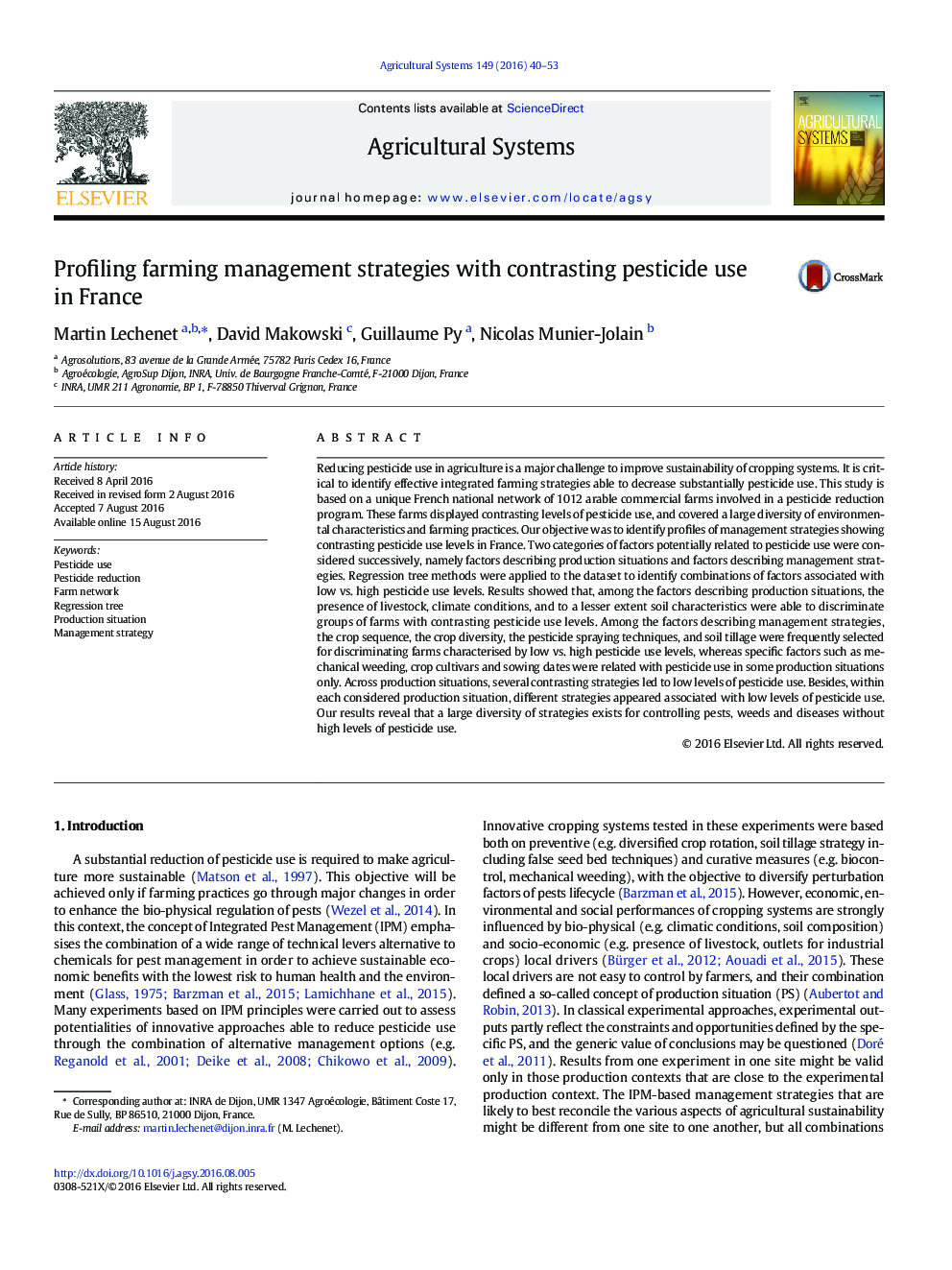| کد مقاله | کد نشریه | سال انتشار | مقاله انگلیسی | نسخه تمام متن |
|---|---|---|---|---|
| 6368238 | 1623221 | 2016 | 14 صفحه PDF | دانلود رایگان |
- The CART method identified combinations of factors explaining TFI variability.
- Low levels of pesticide use are related with combinations of management options.
- Strategies associated with low pesticide use are diverse across farming contexts.
- Crop diversity, tillage, low doses are options frequently discriminating TFI.
- Mechanical weeding, cultivar, sowing date are occasionally discriminating TFI.
Reducing pesticide use in agriculture is a major challenge to improve sustainability of cropping systems. It is critical to identify effective integrated farming strategies able to decrease substantially pesticide use. This study is based on a unique French national network of 1012 arable commercial farms involved in a pesticide reduction program. These farms displayed contrasting levels of pesticide use, and covered a large diversity of environmental characteristics and farming practices. Our objective was to identify profiles of management strategies showing contrasting pesticide use levels in France. Two categories of factors potentially related to pesticide use were considered successively, namely factors describing production situations and factors describing management strategies. Regression tree methods were applied to the dataset to identify combinations of factors associated with low vs. high pesticide use levels. Results showed that, among the factors describing production situations, the presence of livestock, climate conditions, and to a lesser extent soil characteristics were able to discriminate groups of farms with contrasting pesticide use levels. Among the factors describing management strategies, the crop sequence, the crop diversity, the pesticide spraying techniques, and soil tillage were frequently selected for discriminating farms characterised by low vs. high pesticide use levels, whereas specific factors such as mechanical weeding, crop cultivars and sowing dates were related with pesticide use in some production situations only. Across production situations, several contrasting strategies led to low levels of pesticide use. Besides, within each considered production situation, different strategies appeared associated with low levels of pesticide use. Our results reveal that a large diversity of strategies exists for controlling pests, weeds and diseases without high levels of pesticide use.
Journal: Agricultural Systems - Volume 149, November 2016, Pages 40-53
